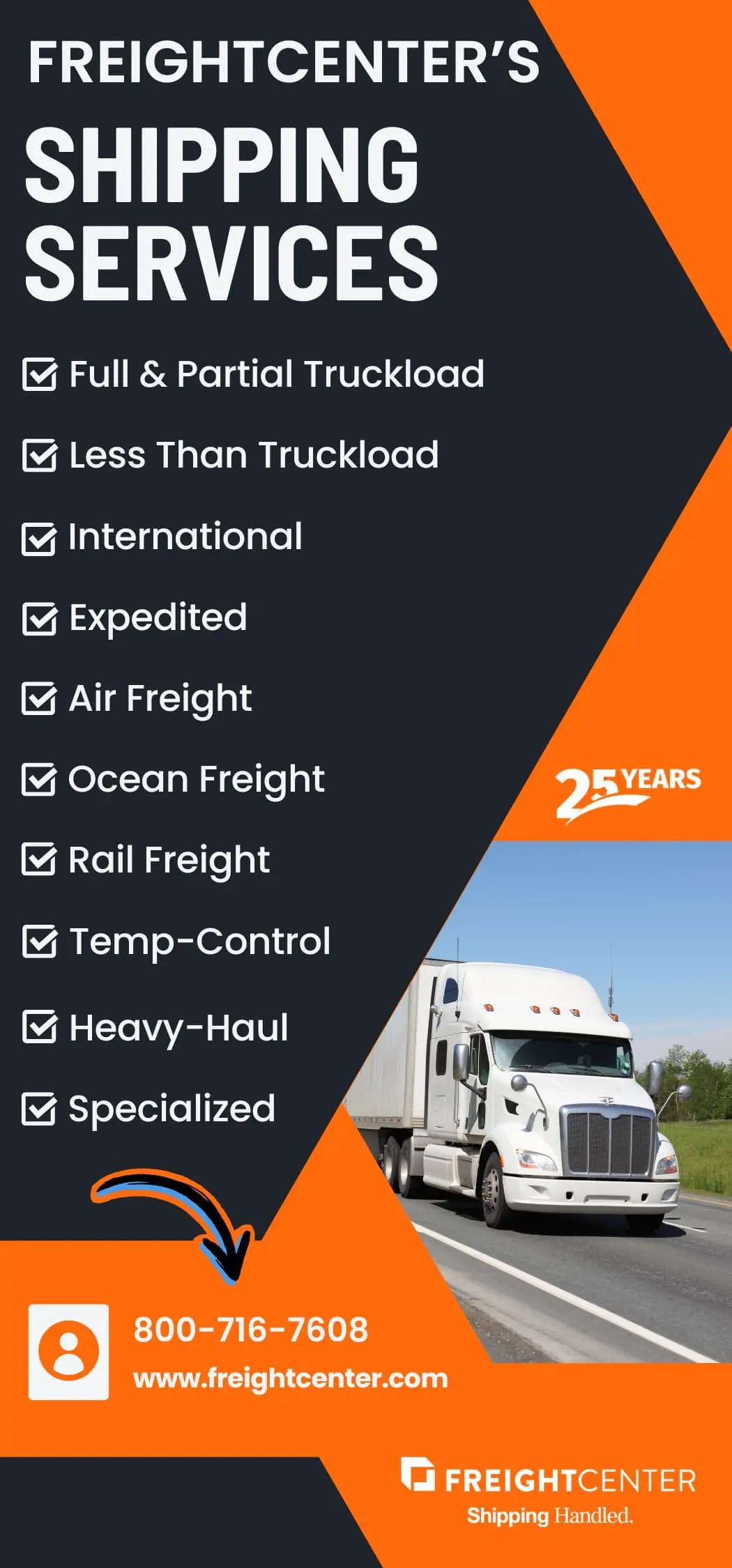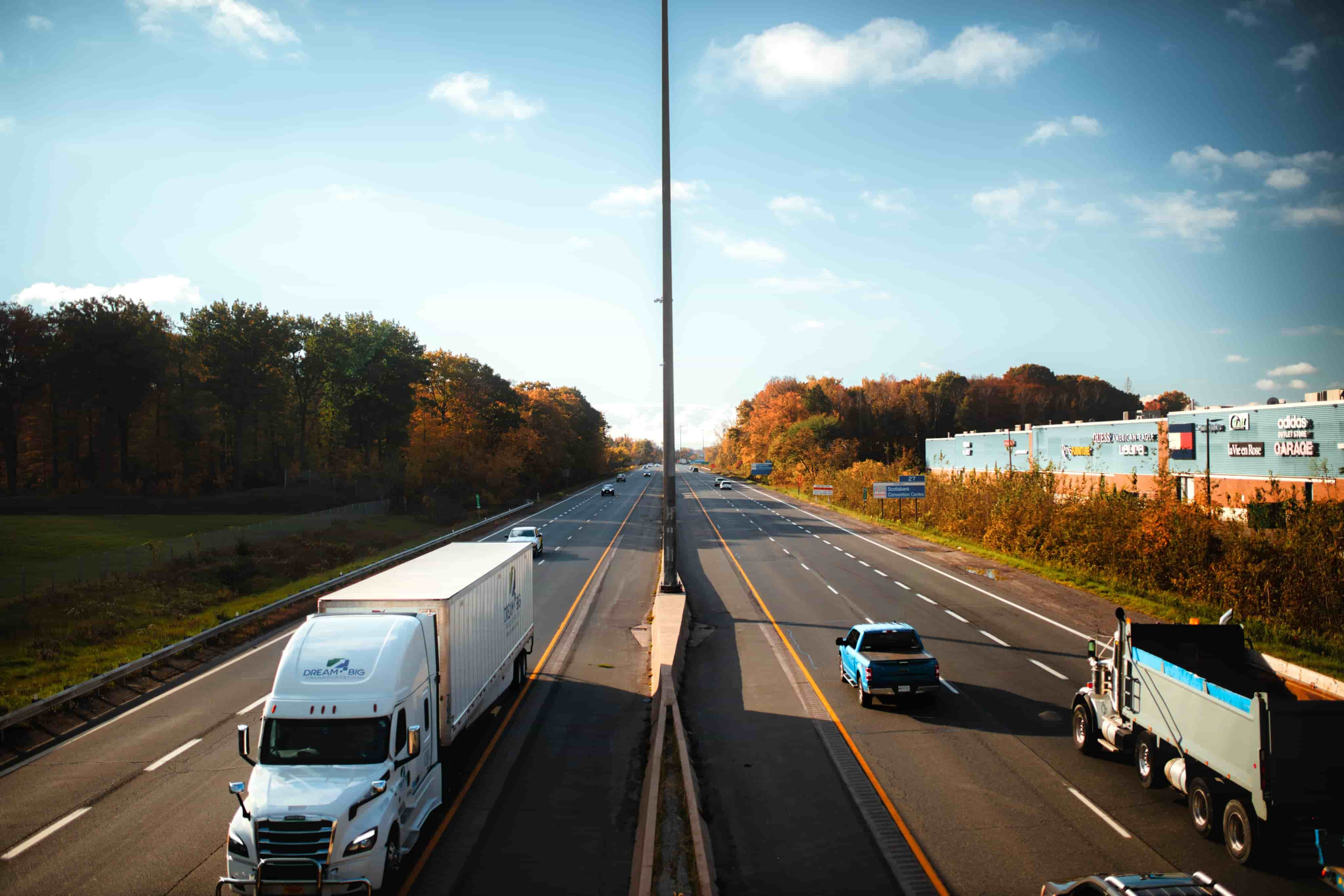
Ultimate Guide to Shipping Coffee
Explore the intricate world of coffee shipping with our comprehensive guide. From the global market dynamics to the crucial stages of the supply chain, we delve into cultivation, export-import processes, packaging, and the logistics of transporting coffee.
Shipping Coffee
Coffee is one of the largest commodity markets in the world, with the morning pick-me-up of many coming in second next to oil! Every year, 7 billion kgs of coffee are traded, and 133 million bags are exported, creating a 28 billion dollar market. The global coffee market was valued at over 88 billion dollars in 2023, with the growth forecast predicting a 4.6% rise every year until 2028. Coffee consumption and the demand for specialty and exotic coffee continue to rise. This increase in demand prompts the need for reliable and efficient shipping methods. Shipping coffee globally presents many opportunities for growth and expansion.
Shipping Methods
Choosing the right shipping method for coffee beans is crucial, and various factors come into play, such as cost, transit time, destination, volume, and any specific requirements for maintaining the coffee’s quality during transit.
Air freight is ideal for time-sensitive shipments, ensuring fast transit to preserve the coffee’s freshness. Often suitable for smaller quantities.
Ground freight suits smaller quantities and shorter distances, providing a cost-effective solution. Ocean freight, while slower, is the most economical for large volumes, allowing beans to undergo a natural maturation process that enhances flavor.
Ocean freight is the cheapest option, allowing collaboration with others heading to the same destination and regulating temperature in full containers.
- Cargo ships commonly transport coffee beans, whether packed in Full Container Load (FCL) or Less than Container Load (LCL).
- A potential option for specialty roasters or farmers is a refrigerated container to help control temperature and moisture levels.
Express courier services are excellent for time-sensitive and small orders, providing door-to-door delivery with tracking abilities. Specialty roasters or farmers may consider refrigerated containers for temperature and moisture control.
Mastering the intricacies of the shipping process is essential to ensure coffee beans reach their destination with aroma, flavor, and quality intact, from meticulous packaging to strategic transportation.
At FreightCenter, our industry expertise, extensive carrier network, comprehensive logistics support, and commitment to the safe transportation of coffee make us the ideal company to trust for shipping coffee. Our dedication to customer satisfaction and efficient delivery aligns perfectly with the industry’s unique requirements.
Table of Contents:
We provide competitive freight shipping prices and an all-inclusive, easy-to-use shipping experience for our customers. Exceeding our customers’ expectations results in thousands of satisfied customer reviews and repeat business. We believe in the power of our customer relationships. Check out FreightCenter reviews from real customers, and learn what they have to say about their freight shipping experience!
Awards and Endorsements
- 2021 Food Logistics’ Top Green Providers
- 2021, 2017 & 2016 Food Logistics’ Top Green Providers
- 2021 & 2018 Supply & Demand Chain Executives’ Pros to Know: Matthew Brosious
- 2020 & 2019 Top Food Logistics’ 3PL & Cold Storage Provider Award
- 2020 & 2019 Business Observer’s Top 500 Companies on the Gulf Coast
- 2020 & 2017 SmartWay® Transport Partner
- 2020 & 2017 Food Logistics’ Champions: Rock Stars of the Supply Chain
- 2020 Best of Palm Harbor Awards for Local Businesses
- 2017 Green Supply Chain Award from Supply & Demand Chain Executive
- 2017 Tampa Bay Business Journal Heroes at Work
- 2016, 2015, & 2012 Food Logistics Top 100 Software and Technology Providers
- 2013 Top 100 Great Supply Chain Partners by SupplyChainBrain
- 2012 TIA Samaritan Award Honorable Mention
- 2012, 2011 & 2010 TBBJ Fast 50 Recipient
- 2013, 2011, & 2010 Diversity Business Top Businesses

Why Choose FreightCenter for Shipping Coffee?
- Shipping Quotes anytime
- Get Freight Shipping Quotes to anywhere in the U.S. & Canada.
- Unbeatable discounts on your freight LTL, truckload, rail, air, and more
- Automated Freight tracking, paperwork & invoices
- Manage all quotes & shipments in one place
- 24+ years of logistics experience working for you!
Choosing Your Carrier
There is no requirement to use the official carrier, and you stand to save a lot of money when you use a 3PL like FreightCenter to book your freight shipping. What’s more, when you call FreightCenter to take care of your shipping, you’ll receive excellent service for a fraction of the cost. The key is competition; FreightCenter is where top carriers compete for your business. Want proof?
Use our instant freight quote tool to receive estimates from numerous carriers, or speak to one of our freight shipping experts by calling us at 800.716.7608.
Choosing FreightCenter
When you choose to work with us, you are choosing to make your shipping process seamless. Here are just some of the benefits working with our Third Party Logistics company will have on your shipping experience:
- When you partner with FreightCenter, a premier 3PL (Third Party Logistics) company with over twenty-four years of experience within the logistics industry, you are choosing success. Over the decades, our team has dealt with nearly every shipment imaginable. There is no shipment process we cannot help you with!
- FreightCenter employs a knowledgeable staff always willing to learn and grow with industry changes and advancements. We are ready to answer any questions you have throughout the entire process!
- We act as the middleman between you and your carrier; you do not have to worry about playing phone tag with your trucker. Your agent will directly communicate with you and your carrier, delivering any necessary information or updates between you.
- We secure the best transit carrier and route for you at the best price. There is no need to spend hours figuring out the logistics or searching for a worthwhile deal.
- We make it easy to ensure your shipments by guiding you toward the best providers. Whether you need full or partial coverage, we have you covered!
- We arrange the pickups and drop-offs while also making sure to track each shipment in transit. This ensures that you know where your packages are every step of the way!
Now, what are you waiting for? Call FreightCenter to set up your account and discuss your shipment. We are ready to answer your questions and provide solutions! Our team looks forward to partnering with you.
booked
The Coffee Supply Chain Unveiled
1. Cultivation in Key Regions
Producing coffee starts with growing it in Central and South America, Africa, and Asia. These areas are known as the coffee belt. Farmers care greatly to grow high-quality coffee plants that will produce good cherries.
2. Harvesting and Processing
When the cherries on a coffee plant are fully grown, they are picked and processed. This is a really important step in the production process because it helps to determine how good the coffee will taste in the end.
3. Sorting and Grading for Excellence
After the coffee beans are processed, they go through a careful sorting and grading process. Any imperfections or unwanted particles are removed carefully, and the beans are sorted by size and quality. This process follows specific grading systems, like the Specialty Coffee Association (SCA), which helps meet industry standards.
4. Preparation for Global Export
The last step of the process is to get the beans ready to be sent to other countries. To do this, the beans are packaged very carefully, ensuring they stay in good condition during their trip. There are specific rules that need to be followed to ensure the beans aren’t damaged while they are being shipped.
From Export to Consumption
1. Exporting and Importing Process
Once the coffee is primed for export, a seamless integration into the international trade market begins. Exporters and importers play pivotal roles in this phase, managing:
- Logistics
- Contract negotiations
- Shipment arrangements
- Customs procedures
This meticulous handling ensures a smooth logistical flow across borders.
2. Post-Import Processing
Upon arrival in the destination country, the coffee embarks on the next leg of its journey. Here, it undergoes additional processing steps, including:
- Roasting
- Grinding
- Packaging
These steps are essential in preparing the coffee for its final destination – the consumer.
3. Final Distribution Chain
The culmination of the process occurs in the final distribution stage. Various entities, including:
- Roasters
- Wholesalers
- Distributors
- Retailers
Come together to ensure the coffee reaches the hands of the end consumer. This stage is vital in bringing the global coffee journey full circle.
Exporting and Importing Summarized
Exporting Coffee
- Quality Control: Exporters work with farmers and co-ops to ensure quality standards and adhere to certifications, assessment, and grading standards.
- Processing & Packaging: Exporters oversee packaging and processing to ensure proper cleaning, sorting, and packaging.
- Export Documentation: Exporters handle necessary documentation, such as commercial invoices, packing lists, certificates of origin, phytosanitary certificates, and export permits.
- Logistics and Shipping: Exporters work with freight forwarders and shipping companies to arrange coffee transport from origin to destination. They handle logistics, negotiate contracts, and ensure proper packaging and handling to protect the coffee during transit.
Importing Coffee
- Sourcing & Procurement: Importers evaluate quality flavor profiles and sustainability practices of different coffees to meet market demand.
- Import Documentation: Importers handle import documentation such as customs declarations, import licenses, and compliance with regulatory requirements of the destination. Importers ensure the completeness and accuracy of documents.
- Customs Clearance: Importers work with agents and brokers to facilitate a smooth customs clearance and experience.
- Distribution and Sales: Importers distribute coffee and may provide marketing and promotional support.
Businesses must stay updated on international trade regulations, market trends, and sustainability practices throughout the importing and exporting process. Transparency, ethical sourcing, and fair trade are crucial to customer satisfaction and help contribute to a sustainable and prospering industry.
Packaging
Packaging plays a significant role in maintaining coffee quality and freshness throughout the supply chain, in addition to proper storage conditions that prevent degradation and maintain optimal conditions. Some common packaging materials include foil-lined bags, vacuum-sealed pouches, or airtight seal cans, which help to create a protective environment and shield the beans from external influences. Packaging needs to allow for easy handling, storage, and transportation; in addition, the size and shape of the package should be considered to optimize space utilization and minimize damages during transit.
Proper packaging is crucial to protect beans during transportation. Exposure to heat, humidity, and sunlight accelerates deterioration and can impact the flavor and quality. The beans are typically packaged in durable bags made of materials like jute or sisal. These bags should be appropriately sized, considering both handling and stacking requirements in containers or freight vehicles. A moisture barrier lining or liner can be added to the bags to safeguard the beans from moisture.
Ensuring airtight sealing with proper closures and one-way degassing valves helps maintain the coffee’s freshness by preventing oxygen exposure. The beans should be kept in airtight containers away from direct sunlight, heat sources, and strong odors. The beans are susceptible to picking up undesirable flavors and aromas. Avoid excess temperature fluctuations, which can cause condensation in the packaging and compromise the coffee’s freshness.
Palletization
To facilitate handling and storage, bags are usually placed on pallets. Palletization ensures transportation stability, making loading and unloading the coffee easier. Proper stacking and secure strapping of the pallets minimize the risk of damage to the bags and allow for efficient utilization of space within shipping containers or cargo holds. Begin by selecting sturdy and appropriately sized pallets and placing a protective layer on the pallet, such as a slip sheet or cardboard, to prevent direct contact between the pallet and coffee bags.
Ensure the pallet is clean and free of any debris. Carefully arrange the bags on the pallet, starting with a stable base layer. Position the bags tightly together, using consistent spacing and aligning them parallel to the pallet edges. As you stack the bags, maintain stability by keeping the weight distribution balanced.
Avoid overhangs that could lead to instability or damage during transportation. Once the bags are stacked, secure them using a stretch wrap or strapping. Wrap the pallet with multiple layers of stretch wrap, ensuring it is tight and covers the bags securely.
Containerization
Shipping coffee via freight often involves containerization. Full container loads or less than container loads can be used depending on the quantity of coffee transported. Shipping containers provide a controlled environment, protecting the coffee from external elements such as humidity, temperature fluctuations, and odors. When loading pallets of coffee into containers for freight shipping, it is crucial to maximize space while maintaining stability. Start arranging the pallets in a single layer along the length or width of the container, depending on its dimensions and the pallet size.
For larger containers, consider stacking multiple layers of pallets, ensuring each layer is stable before adding the next. As you load the pallets, ensure they are aligned parallel to the container walls and evenly distributed to maintain balance. This helps prevent shifting or tipping during transportation. If gaps exist between the pallets or walls, use dunnage or load bars to secure the pallets in place and minimize movement. Once the pallets are loaded, secure them in position using straps, ropes, or load bars. Document and label the container, including pallet count and special handling instructions.
To provide our customers with tailored shipping solutions that cater to their individual requirements and meet shipping needs ranging from simple to complex with expertise, guidance, and creativity.
Rely on the professionals at FreightCenter for competitive rates and a wide range of choices to meet your LTL freight shipping requirements.
We provide tailored solutions for both full and partial truckloads, offering competitive pricing for dry van, flatbed, and refrigerated freight. Trust us to meet all your full truckload shipping requirements.
Our Nationwide Expedited Trucking services ensure the secure and swift movement of your freight. Whether it's a single large box or a full truckload, our freight shipping experts are equipped to deliver your shipment quickly.
Access the most dependable rates for Specialized Freight Services from leading carriers with just a few simple steps. Whether you need white glove service or international shipping, we have your needs covered.
Utilize flatbed trucks to accommodate and transport oversized or uniquely shaped shipments with ease and efficiency. These specialized vehicles offer the versatility needed to securely and safely transport cargo that exceeds standard dimensions or has unconventional shapes.
To enhance the efficiency of your shipping strategy and achieve cost-effectiveness, consider integrating various transportation modes such as trucking and rail. By doing so, you can take advantage of the unique strengths of each mode and create a comprehensive shipping plan that meets your specific needs. This approach can help you streamline your logistics process, reduce costs, and ensure timely delivery of your goods.
When transporting items over extended distances or having multiple packages to ship, it's a good idea to consider utilizing rail transport. Rail transport can offer several advantages, such as cost-effectiveness, greater capacity for larger shipments, and reduced environmental impact. If you want a reliable and efficient way to transport your goods, rail transport is worth considering.
One efficient method for transporting goods across international waters is to use cargo ships capable of carrying large quantities of goods in containers. These containers are designed to securely hold a wide range of products, including electronics, clothing, and food items. By transporting goods in containers aboard cargo ships, businesses and individuals can take advantage of the economies of scale offered by this mode of transportation, which can result in lower costs and increased efficiency.
Air transportation is the best choice when you have a shipment that needs to arrive quickly. Air transportation is known for its speed and reliability, making it the ideal option for time-sensitive deliveries. Whether you need to send documents, packages, or other items, air transportation can ensure they reach their destination quickly and efficiently.
If you need to transport packages across international borders, we can help you arrange for reliable and efficient trucking services. Our team will ensure that your packages are carefully handled and transported to their destination on time so you can know that your shipments are in good hands. Just let us know your requirements, and we'll cover the rest.
If you have to transport heavy machinery, large equipment or other oversized items, you may require specialized heavy haul trucking services. These services are equipped to handle the unique challenges of transporting such shipments, including obtaining proper permits and ensuring compliance with regulations. With specialized heavy haul trucking services, you can rest assured that your shipment will be safely and efficiently transported to its destination.
A third-party logistics provider, commonly referred to as 3PL, specializes in managing and optimizing other businesses' supply chain and logistics operations.

Coffee Shipping FAQS
Q. Can you send Coffee to someone?
Yes, you can send Coffee to someone as a thoughtful gift. To preserve the Coffee’s flavor, choose airtight packaging and opt for expedited shipping to minimize transit time. Proper packaging is crucial to prevent air exposure and physical damage that can impact the quality of the coffee beans.
Q. How is Coffee packaged for shipping?
Coffee is shipped in sturdy jute or sisal bags, which support easy handling and stacking. A moisture barrier lining is often included for added protection against moisture, which can damage the beans. These packaging measures ensure Coffee arrives fresh and ready for consumption.
Q. What is the best way to package Coffee?
The optimal coffee packaging method uses bags equipped with a one-way valve, crucial for allowing CO2 to escape and preventing oxygen entry, ensuring the Coffee remains fresh. This feature is vital for quality, as discerning consumers prefer bags with valves to preserve the Coffee’s aroma and flavor.
Q. How is Coffee shipped around the world?
Coffee is shipped globally in large, secured containers aboard cargo ships. These containers are filled with burlap sacks that protect and preserve the dried, hulled, and roasted coffee beans throughout their journey from origin to destination across international waters.
Q. Are there restrictions on shipping coffee internationally?
There can be restrictions on importing/exporting food products. Working with a logistics provider who can help you ensure compliance with customs and regulations for both origin and destination countries is essential. Make sure to obtain the proper permits and certifications.
Q. Does shipping internationally involve additional costs?
International shipping involves additional costs, including customs duties and taxes. Fees are usually based on the declared value of the goods and specific import regulations of the destination.
Q. Do I need special insurance for shipping coffee?
Purchasing insurance is advised when shipping coffee. Purchase insurance that covers the value of your coffee shipment. Insurance will protect you in the case of loss, damage, or theft during transit.
Q. Should freshly roasted coffee beans be shipped, or should they be allowed to rest beforehand?
Resting is not a requirement, but some coffee bean enthusiasts believe the beans need a rest period to degas before achieving optimal flavor. Consider the preferences of your customers and adjust your shipping schedule.
Q. Can coffee shipments be combined with other food products, or should they be shipped separately?
You can combine shipments, but do so with caution. Be aware of the potential flavor transfer and consider product compatibility.
Q. How can I ensure traceability and transparency in the coffee supply chain?
Ensure traceability and transparency through utilizing blockchain technology or QR codes. These technologies will help inform customers of essential origin, processing, and transportation details. Having this information available to customers can be a great selling point.

